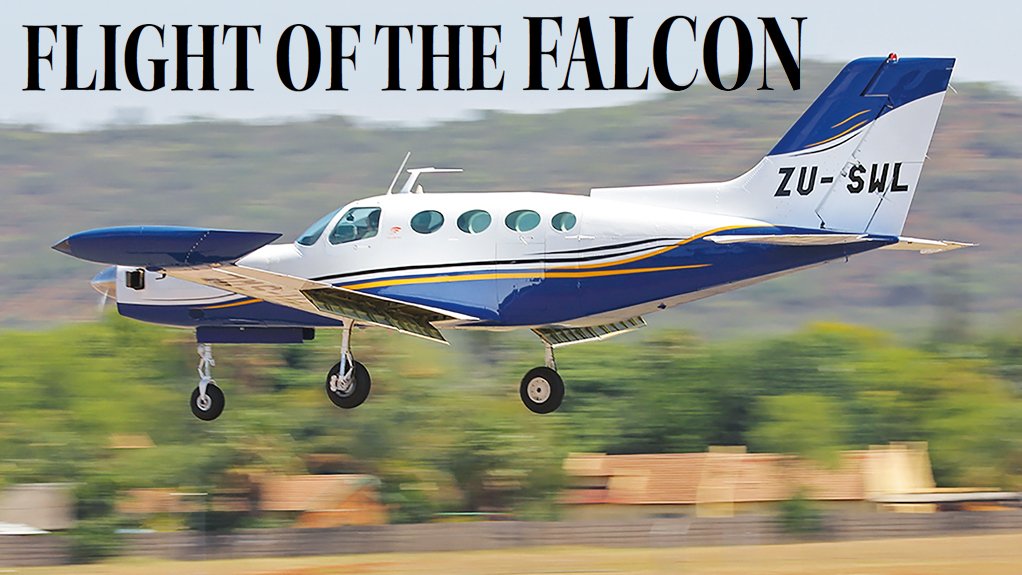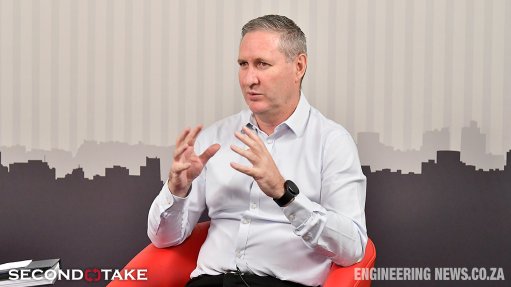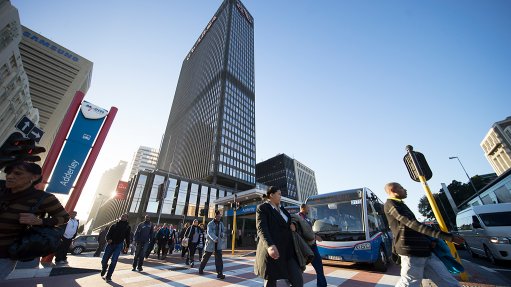Local light passenger and utility aircraft programme taking off
Wonderboom Airport, in Pretoria (within the Tshwane metropolitan municipality), is the nest within which a fledgling civilian aircraft manufac- turing company is developing. Based in the airport’s Hangar 1, Falcon Air has developed and is producing its Falcon 402 general aviation aircraft, albeit currently at a low rate of production.
Falcon Air is not the only South African company which designs and builds civilian aircraft, but the others produce gliders or small piston-engined aircraft, such as single-seat sports planes, two-seat training or recreational types or, at most, four-seater light aircraft. The Falcon 402 is a very different bird, able to carry eight people (one or two pilots and six or seven passengers) or cargo and fly for some 800 nautical miles (nm) and still have reserve fuel in its tanks.
The Falcon 402 is powered by a single Walter Diemech M601D turboprop engine, which has a maximum continuous power rating of 657 shaft horsepower (490 kW). Falcon Air chose this engine in part because it is significantly cheaper than the more commonly used Pratt & Whitney Canada PT6 power plant – the former currently costs about R1.2-million, while the latter comes in at some R3.5-million. But the M601D was also specifically designed for operations in remote and rugged locations, with minimal field maintenance requirements, making it ideal for African operations.
The aircraft has a maximum takeoff weight of 6 800 lbs (about 3 084 kg). Its useful weight (payload) is 3 400 lbs (1 542 kg) and at this weight its cruising speed at Flight Level 100 (FL100: an altitude of 10 000 ft or 3 048 m above sea level) is 185 knots (true air speed – KTAS) and fuel consumption at cruise is 175 ℓ/h. However, speeds of up to 200 knots are achievable at lighter weights. Flying costs per hour are R5 000, and costs per kilogramme per kilometre are R0.96. To give a comparison, it was reported to Falcon Air that the widely used Cessna Grand Caravan (with the Blackhawk upgrade, giving 850 shaft horsepower, in place of the 675 shaft horsepower of the standard Grand Caravan) has a useful load of 3 667 lbs (some 1 663 kg) – slightly more than the Falcon 402 – but a lower cruising speed at FL100 of 165 KTAS, a higher fuel consumption at cruise of 250 ℓ/h, higher flying costs per hour of R7 750 and higher costs per kilogramme per kilometre of R1.55. (All figures supplied by Falcon Air.)
So far, four Falcon 402s have been built and are now in service – they carry the registrations ZU-MDI (the first, which has now flown for nearly 900 hours), ZU-MIA (the second, with a utility, not passenger, interior), ZU-TVB (the third, which has accumulated nearly 550 flying hours) and ZU-SWL (the fourth, now with some 75 flying hours). The fifth is ZU-FZK, which performed its maiden flight early last month and is now in its flight test phase. Assembly of the sixth, which should be ZU-JRJ, is under way.
At the moment, all Falcon 402s are based on the airframe of the Cessna 402 twin piston-engined aircraft. The Falcon 402 is a radical redesign and a complete rebuild of the Cessna type, with major changes to the wings and the fuselage.
HIGH-FLYING AMBITION
Falcon Air’s CEO (and owner) is Hendrik Venter (who also founded, owns and runs DMI Engineering). “The Falcon project is constructive, practical yet also intellectual and meets a need in the aviation industry,” he explains. “What we are doing here is not otherwise available in the aviation spectrum. We’re filling a gap. Our ambition is to eventually have a South African-developed, South African-made, type certified, single turbine, very capable aircraft at an affordable price. We hope, one day, to have Falcon 402s rolling off a production line. It is a serious aircraft that can serve in the commercial aviation sector at an affordable price. We have the ability, capability and expertise in South Africa to do this ourselves, with the cooperation of the authorities. If they don’t come along, then this project cannot go forward.”
Currently, each Falcon 402 has to be individually approved for operation as a non-type certified aircraft, in terms of South African Civil Aviation Regulations Part 24. This is the same part of the regulations that covers home-build aircraft, as well as veteran, vintage and experimental types. “As the Civil Aviation Authority (CAA) becomes more familiar with the programme and the aircraft, they have shown better understanding of the project and we have become more understanding of their perspective,” he points out. “So, it is easier to find common ground. We have so far been allocated ten build numbers, allowing us to construct our first ten aircraft.”
The intent is to achieve type approval for the Falcon 402, which would cover all subsequent examples built by the company, and would allow the setting up of a production line. The final regulatory step would be to get type certification for the aircraft. (See also Engineering News November 11, 2016, page 66.) “Our road to type certification includes the production of the aircraft as a non-type certified, or experimental, type, which brings in the revenues allowing us to finance the programme without needing external funding,” he elucidates. “If I could have one wish, it would be that the CAA and the Department of Transport and the Industrial Development Corporation get really excited about this and other aviation projects in South Africa.”
PHOENIX RISING
The first Falcon 402 actually made its maiden flight back in 2009. But the programme was then paused for three years because the team became involved in assisting another company with another project – the Atlas Angel FWF. This is a re-engined Atlas Kudu light utility aircraft. Developed by the then Atlas Aircraft for the South African Air Force, the Kudu was powered by a single piston engine and proved, in operation, to be underpowered. In the Angel FWF version, the piston engine is replaced by a turboprop, giving much greater power. Falcon Air were originally responsible for the firewall, and everything forward of that, including the engine cradle. The company was involved in the conversion of the first eight Angel FWFs. Falcon Air then returned its attention to its own project, with the benefit of the experience gained from the operation of ZU-MDI.
“In the remanufacturing process, we take the Cessna 402 airframe and disassemble it totally,” reports project engineer David Toma. “It is a complete remanufacturing process. The engine nacelles and support beams are removed from the wing. The wing spars are subjected to nondestructive testing and, if still airworthy, are reinforced. If they are not airworthy, they are replaced by new, stronger spars, needed to compensate for the reduction in weight on the wing caused by the removal of the engines. Tests have established that our wing has more uniform loading than the original Cessna wing. Each wing is fully fitted with new wiring and each aircraft also has a new electrical harness.”
The aircraft is fitted with two wing tip fuel tanks. Each remanufactured wing also has a centre fuel tank, an outboard leading edge tank and an inboard leading edge tank. All the fuel from these tanks goes through a header tank (again, one in each wing) before feeding the engine. This ensures that, when a tank is emptied of its fuel, the engine continues to receive fuel while the pilot switches to another tank. Another safety feature is that the fuel systems in each wing are independent of each other. Total fuel capacity is 900 ℓ, giving an endurance of some five hours. A Falcon 402 regularly flies between Lanseria International Airport (south-west of Pretoria) and Walvis Bay (in Namibia), a distance of 747 nm, in a flight time of four hours and 17 minutes, with about an hour’s fuel remaining. Another has flown nonstop from Wonderboom to Cape Town in under four hours.
And, of course, the new engine goes into the nose of the aircraft. “The Cessna 402 was not designed for a nose engine,” he observes. “We had to design and fit a firewall, a new engine cradle and an engine mount. We load test the engine mount. We’ve put up to 1.6 t on the nose to simulate the engine installation loads experienced in flight, including torque forces.”
All Falcon 402s are fitted with a start-assist computer, developed by Venter, to make engine start easier for pilots. However, other than this, there is as yet no standard set of avionics for the cockpit, as each purchaser specifies what they want. The main instruments are all digital, but a customer can also have analogue instruments, as backups, if desired (one has done so). Radios are currently acquired and installed by each customer.
“The aircraft is tested to ultimate load limits, with future type certification in mind,” highlights Toma. “This is done with each and every aircraft and will be done with each and every aircraft now on order, until we get type certification.”
A constant improvement process is also taking place. Number six will be the first pressurised Falcon 402. This means that it will be able to fly higher and faster, avoiding weather and using less fuel. Furthermore, the company is developing a “wet wing” in which most of the interior of the wing is filled with fuel, in place of conventional bladder fuel tanks. It is also increasing its use of composites. “We’ve done a lot of composite components, especially for the cabin interior,” he points out. “We use composites entirely for the interior. The engine cowling is now composite as well. We’ve already started developing a composite fuselage. Once we have developed, tested and proved this, we’ll move on to develop composite wings. The ultimate aim is an all-composite aircraft.”
A PILOT'S PLANE
“It’s a pilot’s aeroplane,” enthuses commercial pilot and Falcon Air associate SJ Fouché, who, with some 400 hours on the type, has more experience flying the Falcon 402 than any other pilot. “You feel comfortable when you are in it. The controls are well-balanced, you can ‘feel’ the plane, it’s very stable. It’s a very nice plane to fly. It has satellite navigation and an autopilot and, with the avionics and the layout of the instrument panel, from a pilot’s point of view, it is very good for what it is meant to do. You can engage the autopilot and let it fly itself.
“It’s a robust plane. You don’t feel you are going to break it,” he adds. “The computer, for example, prevents the pilot from exceeding the engine limits. The advanced avionics employed decrease the workload in the cockpit. It’s very manoeuvrable, although less manoeuvrable if you fill up the tip tanks! It’s quite heavy in the wings when full of fuel – which amounts to about 400 kg in each wing, but it is also more stable when it’s heavy. And it lands nicely when it’s heavy. Stalling behaviour is predictable and gentle and recovery is very easy. It won’t catch you out.”
The maximum permitted stress load on the aircraft’s wing is 3.6 g (that is, 3.6 times the force of gravity at sea level), although the actual maximum stress is 5.4 g. The Falcon 402 is, after all, not intended for acrobatics. Neither is it a short takeoff and/or landing aircraft. At Wonderboom, at the height of summer, the takeoff run of a Falcon 402 at maximum takeoff weight is 1 100 m. At lighter weights, the takeoff run is reduced to 600 m, also at Wonderboom. The aircraft is also intended to be operated from prepared runways, but these can be compacted earth or gravel as well as tar or concrete, meaning it can operate from small town airstrips.
In comparison to the original Cessna 402, the Falcon 402 has an increased useful load, a higher cruise speed, a slight improvement in rate of climb, a shorter takeoff run and a major reduction in landing distance. “One of the existing owners of a Falcon 402 has ordered a second aircraft and another is considering doing so,” reports Toma. “This seems to indicate that we are on the correct path.”
“We’re still in the hand-build stage,” he notes. “Our aim is to ultimately move to full-scale industrial production.”
Comments
Press Office
Announcements
What's On
Subscribe to improve your user experience...
Option 1 (equivalent of R125 a month):
Receive a weekly copy of Creamer Media's Engineering News & Mining Weekly magazine
(print copy for those in South Africa and e-magazine for those outside of South Africa)
Receive daily email newsletters
Access to full search results
Access archive of magazine back copies
Access to Projects in Progress
Access to ONE Research Report of your choice in PDF format
Option 2 (equivalent of R375 a month):
All benefits from Option 1
PLUS
Access to Creamer Media's Research Channel Africa for ALL Research Reports, in PDF format, on various industrial and mining sectors
including Electricity; Water; Energy Transition; Hydrogen; Roads, Rail and Ports; Coal; Gold; Platinum; Battery Metals; etc.
Already a subscriber?
Forgotten your password?
Receive weekly copy of Creamer Media's Engineering News & Mining Weekly magazine (print copy for those in South Africa and e-magazine for those outside of South Africa)
➕
Recieve daily email newsletters
➕
Access to full search results
➕
Access archive of magazine back copies
➕
Access to Projects in Progress
➕
Access to ONE Research Report of your choice in PDF format
RESEARCH CHANNEL AFRICA
R4500 (equivalent of R375 a month)
SUBSCRIBEAll benefits from Option 1
➕
Access to Creamer Media's Research Channel Africa for ALL Research Reports on various industrial and mining sectors, in PDF format, including on:
Electricity
➕
Water
➕
Energy Transition
➕
Hydrogen
➕
Roads, Rail and Ports
➕
Coal
➕
Gold
➕
Platinum
➕
Battery Metals
➕
etc.
Receive all benefits from Option 1 or Option 2 delivered to numerous people at your company
➕
Multiple User names and Passwords for simultaneous log-ins
➕
Intranet integration access to all in your organisation





















